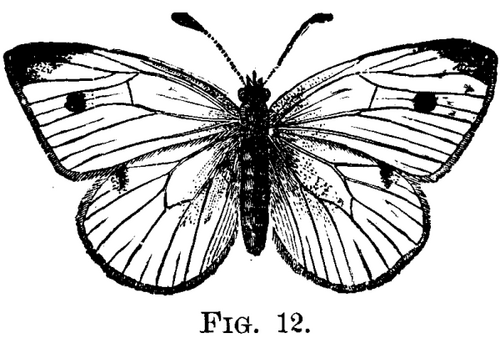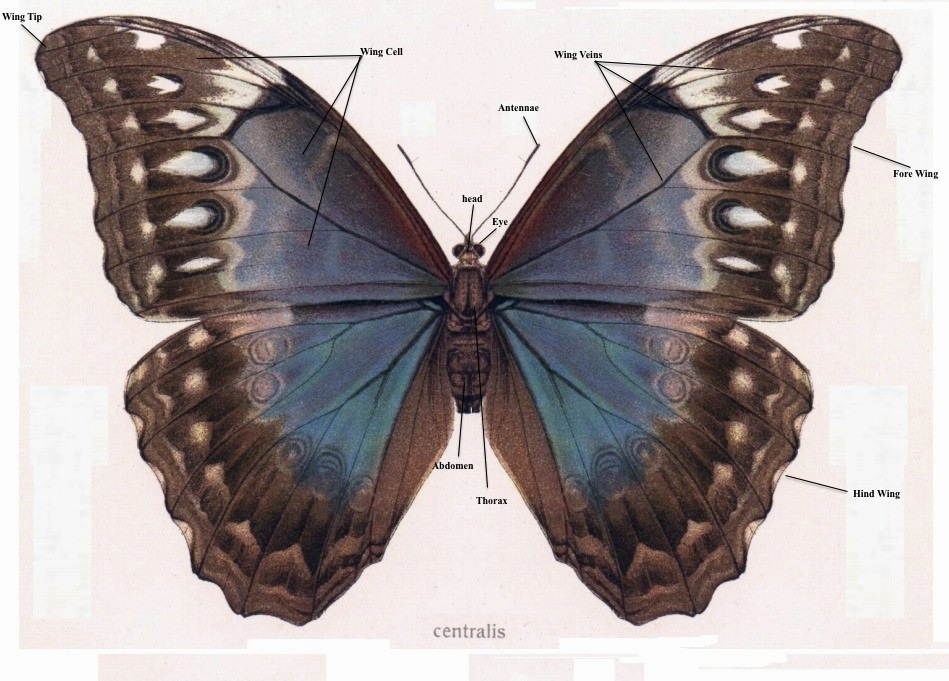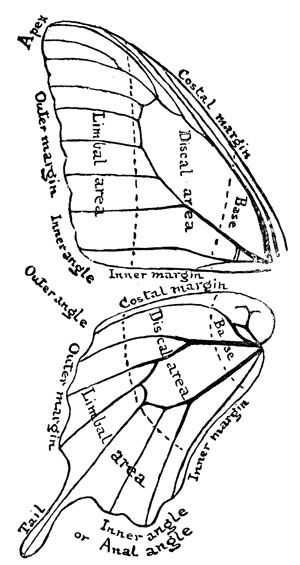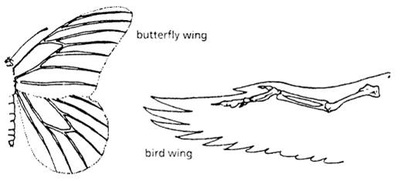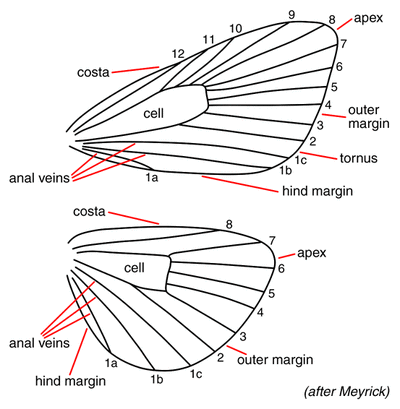The Butterfly
"Any of numerous slender-bodied diurnal lepidopteran insects including one superfamily (Papilionoidea) with broad often brightly colored wings and usually another superfamily comprising the skippers." (Merriam-Webster)
As such a diverse portion of this order, there are approximately 17,000 species of butterfly around the world. Some of these include Swallowtail, Skipper, Brush-Foot, and Gossamer-Winged.
Anatomy
NameWing Tip
Abdomen
Thorax
Wing Veins
Head
Antennae
Eye
|
Purpose-Markings and colourings on butterfly wings are often used to identify them. Many of the Pieridae species are distinguishable by their orange, white, or yellow wing tips.
-A butterfly's abdomen contains a multi-segmented exoskeleton and their digestive system.
-The thorax contains powerful muscles that control the wing and flight movements.
-Although the pattern of veins changes from species to species, the function remains the same. These are also often used to classify and identify butterflies.
-The head, while supporting the antennae and the eye, also contains the palpi, which are used for various perceptory functions, and the proboscis, which is used much like a straw.
-These are used for sensory functions-- primarily, the perception of pheromones.
-Butterflies have compound eyes that provide nearly 360-degree vision. Their perception of colour is vastly different from ours, and it has been proven that they can communicate with one another visually. Studies have shown that they may be more receptive to colours matching the wing colours within their own species.
|
Surprise Elements of the Butterfly
- Certain species of butterfly have an almost symbiotic relationship with alligators and turtles, in which the latter allow the butterfly to drink their tears for nutrient.
- The origin of the word "butterfly" is yet unknown, but it is believed that the insects were specifically named for the old wife's tale of bugs stealing butter and milk from open windows.
- One of the more distinguishing features of a butterfly, and of all Lepidoptera, is its pupae stage.
- Despite the popular myth suggesting otherwise, rubbing a butterfly's scales off of its wings will not kill it.
- While it may seem that there is a copious amount of butterflies in this world, they make up only 20% of the Lepidoptera order.
- The earliest Lepidoptera fossils found were approximately 190 million years old.

